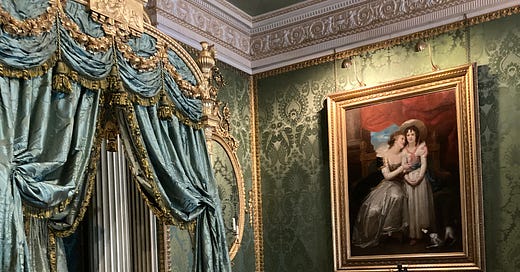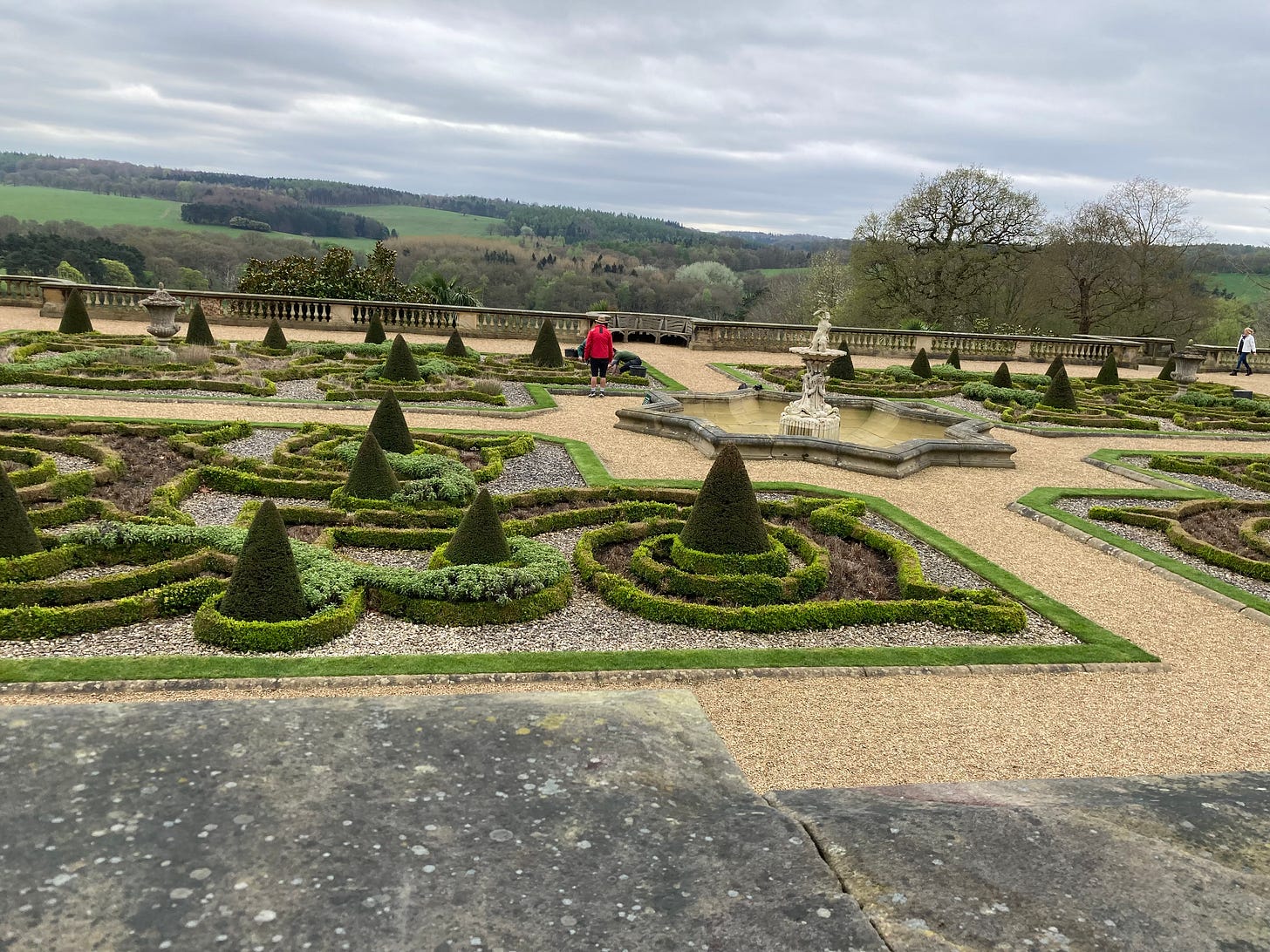I’ve been promising (or possibly threatening, depending on your point of view) to write about funding and stately homes for a while. But as I’ve been asked a question about it on a previous post which suggests that there might be some interest, here goes.
In short, a total firehose of public money has gone into shoring up stately homes since 1945. Here is just one example, that I happen to have written up for the book.
This is the state bed at Harewood, which is the single most expensive piece of furniture that Thomas Chippendale ever made. It cost the Lascelles family £400, which is the equivalent of c. £75,000 today.
Like most state beds, it was rarely used and took up a lot of space, and so this one was consigned to an outhouse in the nineteenth century. It was rediscovered in the 1980s and restored a decade later. Which is the point where I start to have questions, because getting the bed back in shape was not a cheap operation. Only a tiny scrap of the original fabric remained, and much of the woodwork was in pieces. “Expert advisers, carvers and gilders, mattress makers, silk weavers, seamstresses and craftsmen and women all over the country worked to restore this masterpiece of English furniture to its former glory.” Oh good.
The known cost of restoring it was £191,000 - and that would be £355,000 today. So the old extraordinarily extravagant thing was restored at more than seven times the cost of its original extravagance.
All of which would be fine if this was how the Lascelles family wanted to spend their money, but that’s not what happened. The reason I mention the ‘known cost’ of the restoration is because that’s what the National Heritage Lottery Fund gave as a grant. In short, a massive public grant which went to restoring someone’s private property.
My husband asked the room guide - who was very good at explaining how the bed was found and remade - whether this meant that we now owned a share in the bed, or whether it was still owned by the Lords Harewood. The guide didn’t know, but my subsequent researches suggest that all of it still belongs to them, despite the huge influx of money. Happy to be corrected though.
And that grant is just one tiny part of all the cash which gets directed at propping up aristocrats in their very expensive houses. To see some more, you just have to look out the window at Harewood, where a lovely (if you like box and carpet bedding) Victorian Parterre stretches along the full facade of the house.
Designed in the 1840s, it was dug up after the Second World War because maintaining it was too costly. But this too was entirely replaced and replanted thanks to a National Heritage Lottery Grant.
Multiply this by all the houses in the country, and I think we have a problem. We can’t afford libraries and social care, but we can afford Chippendale beds. More pertinently, we barely fund public parks but we can afford to pay for a vast and labour intensive piece of planting which costs - checks the website - £23 a person to visit.
It’s not often I find myself in agreement with Michael Heseltine, but at some point in the 1980s he said that the function of the state was not to keep aristocrats in homes they couldn’t afford to run. Forty years have passed and nothing has changed.
More crucially, these grants are just a tiny part of the infrastructure which keeps these people afloat - I haven’t even started on the tax breaks, charitable trusts and in some places ‘the nation’ has even bought pieces of the art and furnishings but then allowed the owner to hang onto them as though nothing has happened. And I haven’t even got onto the single worst scam that the aristocracy managed to perpetrate, which was to take the British people’s memorial fund for the Second World War and direct to - guess what - themselves and their houses.
That’s next time.






I’m looking forward to your book. There’s much the same going on with land owners - our local estate has acquired numerous grants for ‘tree planting/fencing etc and then has the cheek to try and keep people off the land - and we have the right to roam here in Scotland. There’s a whole backstory to this regarding ancient rights of way and poor planning decisions… of course he’s not the only one - https://www.theguardian.com/uk-news/2021/dec/26/highland-landowner-faces-legal-challenge-over-right-to-roam?CMP=Share_iOSApp_Other